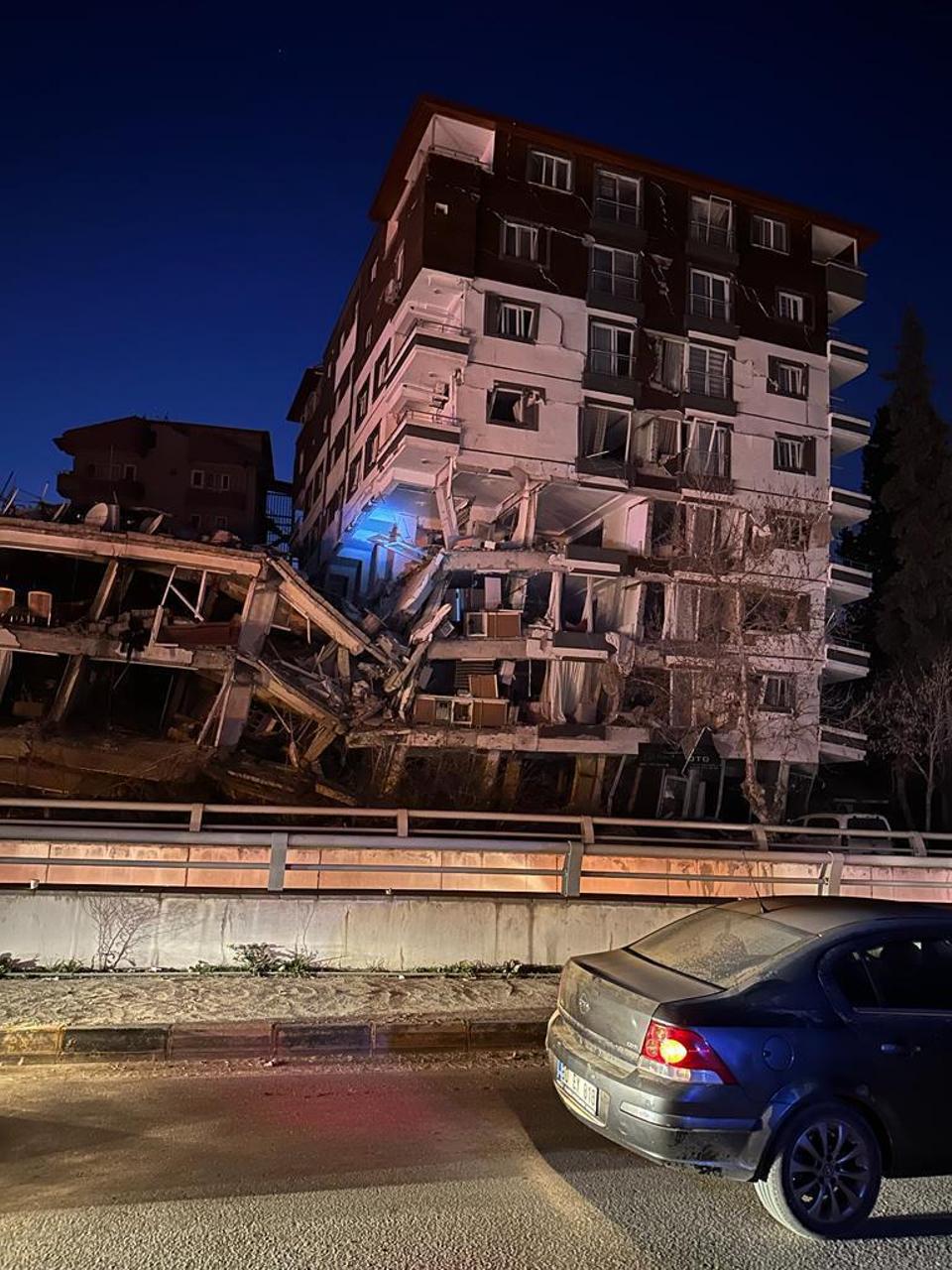A Turkish man’s desperate search for his family relics came to a sudden end as his apartment building, already damaged by the February 6 twin quakes, came crashing down in the latest tremor.
ANTAKYA — When two back-to-back earthquakes devastated southern Türkiye on February 6, killing tens of thousands of people and leaving towns and cities in rubble, Alpaslan Koseoglu, 42, escaped the disaster unscathed.
His apartment complex in the city centre of Antakya in Hatay province was damaged but withstood the magnitude 7.8 and 7.6 twin temblors, unlike most other adjacent buildings, which were reduced to mangled heaps of steel and concrete.
Hatay was among the worst affected of the 11 provinces ravaged by the twin earthquakes that rocked southern Türkiye and parts of adjoining Syria. Out of the combined death toll of more than 47,000 people, at least 42,300 have been killed in Türkiye alone.
After escaping the quakes with his brother and sister-in-law, Koseoglu – in his 50s – returned daily to the still-standing building in the hope of retrieving anything valuable, even sentimental value. “I was hoping to retrieve some family heirlooms like my grandfather’s ring and silverware that we proudly displayed in a showcase,” he tells TRT World.
The tremors shattered windows, tore down parts of the exterior wall and damaged the pillars, but his building still stood, giving him a false sense of hope that he could enter and get his stuff out.

But then on February 20, a fresh 6.4 magnitude earthquake hit close to Hatay and Koseoglu’s building came crumbling down. It is now just a heap of stones and iron-rebar debris.
Across Antakya, entire streets have turned into mountains of concrete waste or ominously standing skeletal structures – their windows and fronts gone, broken chandeliers dangling inside, a couch about to fall off a 5th floor of what once used to be someone’s living room, pages of a diary flying around in circles.

The district has turned into a ghost town as many of the residents have moved into AFAD shelters or travelled to be with their relatives in other cities.
Unimaginable devastation
In the city centre, where supermarkets, stores and residential buildings were once testimonies to a bustling urban centre, the only sounds one hears now are of emergency vehicles whisking by, their sirens shrieking, and pieces of glass shattering whenever a gust of wind sweeps across.
But the drive towards Antakya, through the picture-postcard countryside and other barely-affected human habitations, gives little indication of the apocalyptic scenes ahead.
In Iskenderun, a historic port city said to have been founded by Alexander the Great, exhaust towers of a power plant rise into the sky. Cargo ships heading towards the port appear on the horizon. On the other side of the road, Amanos mountain is covered with green forests. Blue and white box-like houses dot the idyllic landscape.
Then the destruction starts to become visible. First, in brief snapshots – a crack in one building, a fallen chunk of plaster from another – and then the scene unfolds in all its gory details.
On the streets and beside them, there are more excavators and dump trucks than humans. AFAD teams are still looking for bodies in some areas while soldiers patrol the streets – checking identities and making sure no one tries to steal valuables left behind by the residents, from kitchen utensils to HD TVs.
Koseoglu, who owns a farm near the Syrian border, says he was lucky to get out alive. More than 20 people died in the next building in the February 6 earthquakes.
“I am happy to be alive. I don’t worry about the fact that I lost everything,” he says.
On February 22, Koseoglu watched excavators and bulldozers work on the debris, kicking off a thick layer of dust.
Recognising the threat of aftershocks, the provincial authorities have banned residents from entering the buildings, which have been designated as ‘heavily damaged’. All the more reason for people to avoid going near buildings like Koseoglu’s.
A nearby park on 16 Street off Ataturk Avenue has been converted into a makeshift camp for relief workers where they eat and sleep.
As the TRT World team drove past, the driver of an excavator advised caution, saying many buildings were vulnerable to collapse in the event of an aftershock.
On Yuzbasi Asim Avenue, a large temporary settlement for earthquake survivors with hundreds of tents has been set up. Inside, people were using firewood to run makeshift stoves to keep themselves warm as relief groups like Greater Good distributed food.
Monday’s earthquake also shook Samandagi, another district of Hatay province bordering the Mediterranean Sea.
The disaster has pushed people into a panic mode, and many families are spending their nights outside even though their houses and apartments haven’t been badly damaged.
Jozef Naseh, a 70-year-old Christian archaeologist, says he’s tired of the constant anxiety. “I am an old man and maybe it’s easier for me to accept the prospect of a sudden death. But young people are full of hopes about their future and don’t want to die suddenly.”
“We want to move to a safer area like Antalya to make them feel better,” Naseh tells TRT World. Antalya is a popular tourism destination, hundreds of kilometres from the East Anatolian fault line, where the recent earthquakes have originated.
Since February 6, more than 7,000 aftershocks have hit Türkiye’s southern region, putting people like Naseh on the edge.
“All these tremors have just added to the trauma. Moving to safer areas might help us keep our sanity,” he says.
Source: TRT World
Search for family heirlooms ends as building crumbles in latest earthquake
Source: News Achor Trending
0 Comments